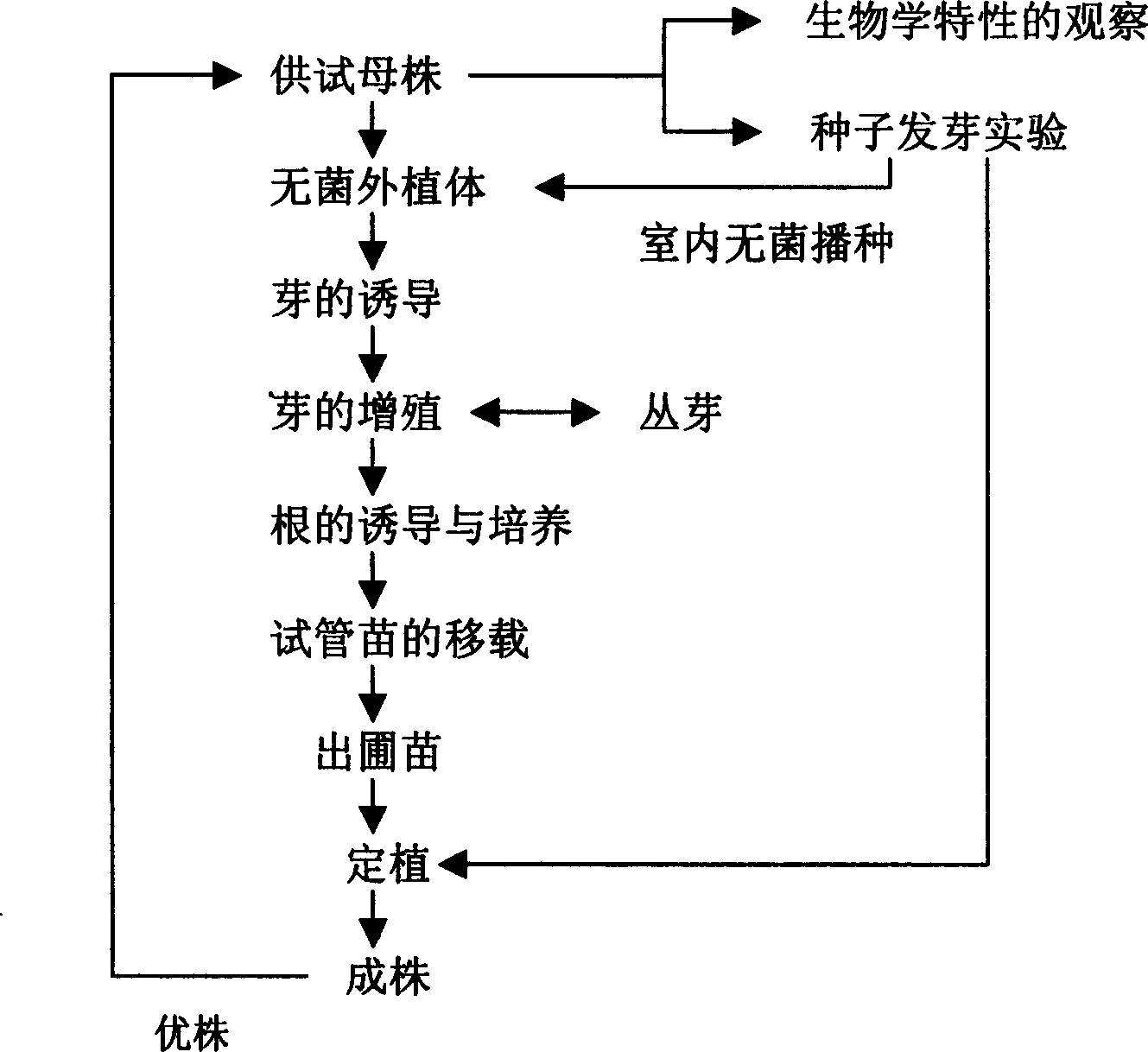Silverback Artocarpus in vitro breeding method
A technology of in vitro propagation and explants, applied in horticultural methods, botanical equipment and methods, horticulture, etc., can solve the problems that the in vitro propagation method of laurel wood has not been reported.
- Summary
- Abstract
- Description
- Claims
- Application Information
AI Technical Summary
Problems solved by technology
Method used
Image
Examples
Embodiment 1
[0030] The in vitro propagation method of laurel wood consists of the following steps:
[0031] (1), the acquisition of sterile explants;
[0032] Use the stem tip, stem segment, and leaf of the excellent seedling of the mother plant as explants; rinse the stem tip and stem segment with tap water, treat with 70% alcohol for 20 minutes, rinse 5 times with sterile water, and use 0.1% mercury chloride Treat for 10 minutes, wash with aseptic water 4 times, cut the shoot tips into 1.5cm long pieces and inoculate them into the induction medium. The success rate of mother plant stems is 3%, and the success rate of annual stems is 5%. Within 7 days of material inoculation, some incisions have light brown substances secreted and have a water-soaked shape. Such materials will die slowly, and some will turn green, and the incisions will swell, but there is no callus. After 25 days, small buds appeared. After the leaves were rinsed with tap water, they were treated with 70% alcohol for...
Embodiment 2
[0046] The method is the same as in Example 1, but the explants in the step (1) are the stem tips, stem segments, and leaves of the seedlings obtained by aseptic sowing. This method is faster than Example 1.
[0047] The above method of aseptic sowing is as follows: Immediately after the seeds are harvested, they are rinsed with tap water, dried, treated with 70% alcohol for 10-15 seconds the next day, rinsed with sterile water for 3-5 times, and then sterilized with 0.1% mercuric chloride for 3 minutes. Rinse with sterile water five times and inoculate into MS medium, place in an incubator for dark cultivation, keep the temperature at 28°C, and cultivate for 30 days. After 30 days, a complete plant with roots, stems and leaves will grow.
[0048] In August 2002, 26 seeds were collected. Immediately after the seeds were collected, they were rinsed with tap water, dried, treated with 70% alcohol for 12 seconds the next day, rinsed with sterile water for 4 times, and then steril...
PUM
 Login to View More
Login to View More Abstract
Description
Claims
Application Information
 Login to View More
Login to View More - R&D
- Intellectual Property
- Life Sciences
- Materials
- Tech Scout
- Unparalleled Data Quality
- Higher Quality Content
- 60% Fewer Hallucinations
Browse by: Latest US Patents, China's latest patents, Technical Efficacy Thesaurus, Application Domain, Technology Topic, Popular Technical Reports.
© 2025 PatSnap. All rights reserved.Legal|Privacy policy|Modern Slavery Act Transparency Statement|Sitemap|About US| Contact US: help@patsnap.com

